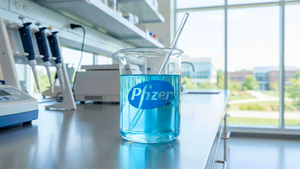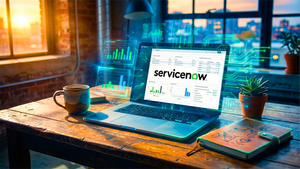Healthcare logistics provider Owens & Minor (OMI) entered the Bottom 100 Stocks to Buy Monday in the 98th spot.
The penny stock is down 78% over the past 12 months due to significant losses at one of its operating segments. The company announced on Oct. 7 that it would sell its Products & Healthcare Services segment to private equity firm, Platinum Equity.
In recent years, the company has expanded into home-based care. As the company’s press release stated, the sale “will allow the Company to focus on a simpler business model and allow for a more appropriate valuation as a leader in this segment.”
God knows long-time shareholders could use some good news. A little over four years ago, Owens & Minor stock traded at just under $50, with a market cap of $3.7 billion. Today, it’s under $250 million.
I’ve never followed OMI stock, but the contrarian in me just had to take a closer look after its share price fell below $3.
Should the company’s new focus be enough for penny-stock investors? Maybe. Here’s why.
Owens & Minor’s Business Pre-COVID
The company has quite a history in Richmond, Virginia. Founded in 1882, it has been in existence for 143 years. It went public on Jan. 29, 1988. I’ve been unable to track down details such as the IPO price. It’s not a primary concern regarding my observations about the company.
Looking at income statements from S&P Global Market Intelligence for 1990 through 2024, the company posted year-over-year revenue growth in 29 of the 34 years. Its operating income was up in 23 of the 34 years, so profits were a little more volatile, but still reasonable over more than three decades.
Since COVID, investors have been comparing a business’s revenue before the pandemic (2019) with its revenue after (2023 and 2024). In 2019, Owens & Minor had an operating income of $99.3 million on $9.21 billion in sales (1.1% operating margin). In 2023 and 2024, its operating margins were 2.1% and 2.3%, respectively.
I don’t think I’ve ever owned grocery store stock like Kroger (KR). These are grocery-store-like margins. You have to be really well-run—Costco’s (COST) fiscal 2025 operating margin was 3.8%—to survive and thrive.
Clearly, the company’s business went to rat poop between 2016 and 2019. Owens & Minor’s board dismissed former CEO Cody Phipps in November 2018 after three years of shareholder value destruction. Ed Pesicka, the former chief commercial officer at Thermo Fisher Scientific, replaced him. Pesicka remains CEO today.
In December 2018, Fitch released a scathing report downgrading the company’s long-term Issuer Default Rating from B+ to B-.
In 2018, it reported a net loss of $437 million, driven by $440 million in goodwill impairment charges. Further, due to acquisitions, its long-term debt nearly doubled that year to $1.65 billion. As of Sept. 30, 2025, its long-term debt was $1.84 billion, and its 12-month trailing interest expense was $149.8 million, more than double the level at the end of 2018.
The 2022 Acquisition to Change Direction
In March 2022, Owens & Minor completed a $1.7 billion acquisition of Apria, a provider of home medical equipment, including respiratory therapy and sleep apnea machines. It combined Apria with Byram Healthcare, the direct-to-patient medical supply distributor it acquired in 2017, paying $367 million, net of cash.
As a result of the Apria acquisition, the company realigned into two operating segments: Products & Healthcare Services (79% of 2022 revenue) and Patient Direct (21%). The latter’s operating income was greater than the former’s that year despite the lopsided division of sales.
In 2022, the Products & Healthcare Services segment had revenue of $7.9 billion. In 2024, it was barely higher at $8.02 billion. Meanwhile, Patient Direct revenues jumped 30% over the past two years to $2.68 billion. Patient Direct’s operating income in 2024 was $260.2 million, five times higher than Products & Healthcare Services on one-third the revenue.
It makes total sense for the company to focus exclusively on the Patient Direct business model.
It will receive $375 million in cash from Platinum Equity for the Products & Healthcare Services business, which it can use to lower its debt. In addition, it will retain a 5% interest in the business and keep approximately $150 million in federal net operating loss carryforwards.
Over the nine months ended Sept. 30, Patient Direct revenues totalled $2.05 billion, 3.4% higher than a year earlier. The gross margin was 47.1%, and adjusted EBITDA (earnings before interest, taxes, depreciation, and amortization) was $284.8 million, 6% higher than a year ago.
Owens & Minor expects the business to generate adjusted earnings per share of $1.05 at the midpoint of its 2025 guidance.
The Bottom Line on Owens & Minor Stock
There are still several concerns with Owens & Minor’s business once the sale of its Products & Healthcare Services segment is completed.
For one, the debt levels will remain high. According to Fitch, EBITDA leverage will be 4.9x once the sale is completed, and will stay about 4.5x into 2026.
“Successful completion of the P&HS divestiture is critical to alleviating ongoing cash flow pressures associated with this segment and improving OMI's overall financial flexibility,” Fitch stated.
The ratings agency also points out that now that it’s a pure-play Patient Direct business, it loses revenue diversification and faces heightened reimbursement risk. It also exposes itself to potential contract losses, though that risk already existed with or without the other business.
Fitch placed all of Owens & Minor’s ratings on RWN (Rating Watch Negative), indicating concerns about the company’s current credit rating. That could change if the Patient Direct business picks up new contracts in the months ahead.
Three assumptions come into play: 1) Patient Direct’s 2025 revenues meet guidance of $2.79 billion at the midpoint, 2) 2026 revenues rise by 1.5%, to $2.83 billion, and 3) its free cash flow margin is 4%, or $11.3 million.
Based on a $228 million market cap, its free cash flow yield is 5.0%. That’s decent, if not spectacular value.
If you’re risk-averse, I wouldn’t buy; put it on your watchlist instead. If Owens & Minor gets its balance sheet cleaned up--EBITDA leverage below 4.0x--it won’t be a penny stock for too much longer.
If. If. If.
On the date of publication, Will Ashworth did not have (either directly or indirectly) positions in any of the securities mentioned in this article. All information and data in this article is solely for informational purposes. For more information please view the Barchart Disclosure Policy here.
More news from Barchart
- Enovix (ENVX) Offers the Most Daring Contrarians a Quant-Driven Upside Opportunity
- Alphabet Generates Strong FCF and If It Continues GOOGL Stock is 40% Undervalued
- Is Owens & Minor’s New Focus Enough to Lift Its Shares From the Bottom 100?
- SPY’s 50-Day Moving Average Streak is Going Strong. The Rest of the Market is Sending Up Flares.





